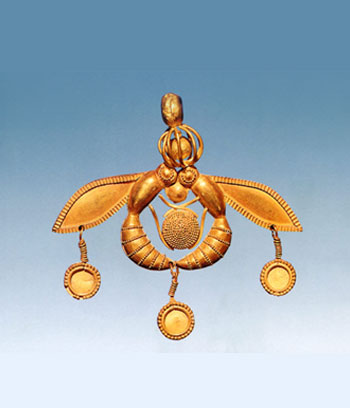 Malia has got an important history that dates back to the Neolithic Age and its peak was during the Minoan Era. One of the most important monuments of Minoan civilization is the palace of Malia in the Municipality of Chersonissos. 500 meters northeast of the palace, at a location named Chrysolakkos necropolis the great protopalatial cemetery was excavated. It is a burial site enclosed in a rectangular building with walls made of grey limestone. It is a funerary complex with rectangular small spaces that served as graves. The excavations brought to light golden tributes to dead people and a concave altar intended for funeral worship.
Malia has got an important history that dates back to the Neolithic Age and its peak was during the Minoan Era. One of the most important monuments of Minoan civilization is the palace of Malia in the Municipality of Chersonissos. 500 meters northeast of the palace, at a location named Chrysolakkos necropolis the great protopalatial cemetery was excavated. It is a burial site enclosed in a rectangular building with walls made of grey limestone. It is a funerary complex with rectangular small spaces that served as graves. The excavations brought to light golden tributes to dead people and a concave altar intended for funeral worship.
In one of these spaces, it was found the famous gold jewelry with bees, the Minoan Malia Bees. This Minoan jewel dates back to 1800-1700 BC and is hosted at the Archaeological Museum of Heraklion. It is a masterpiece of Minoan art having the shape of two bees that pour a drop of honey in the honeycomb. All the elements of the jewelry are arranged circularly and the bees are facing each other joining at the same time their legs above the drop. The depiction of the bees is absolutely perfect while the jewel as a whole seems to have a symbolism and a secret. If one reverses this bee pendant, he will see that it depicts a bee that has a face and a characteristic hairstyle of that era.” It is a unique depiction of the bee as a goddess, which fertilizes the roses on the side” as archaeology professor, Nikos Stambolidis, explains.
During the Paleopalatial Period (2500 – 2000 BC), the cemetery zone was expanded towards the north side of the area near the beach. The main ensemble that has been built is that of Chrysolakkos (place with gold) which owes its name to the gold leaves and the precious objects discovered there by local villagers in the late 19th century while they were cultivating their fields. This fact was the reason for the excavation of the whole area by gold miners. These random discoveries of gold and jars prompted the archaeologist Joseph Hatzidakis in May 1915 to carry out the first excavations in the place of the palace. The excavations continued in 1921 by the French Archaeological School where L. Renaudin began to unveil the necropolis of Chrysolakkos and explore the seaside monuments.